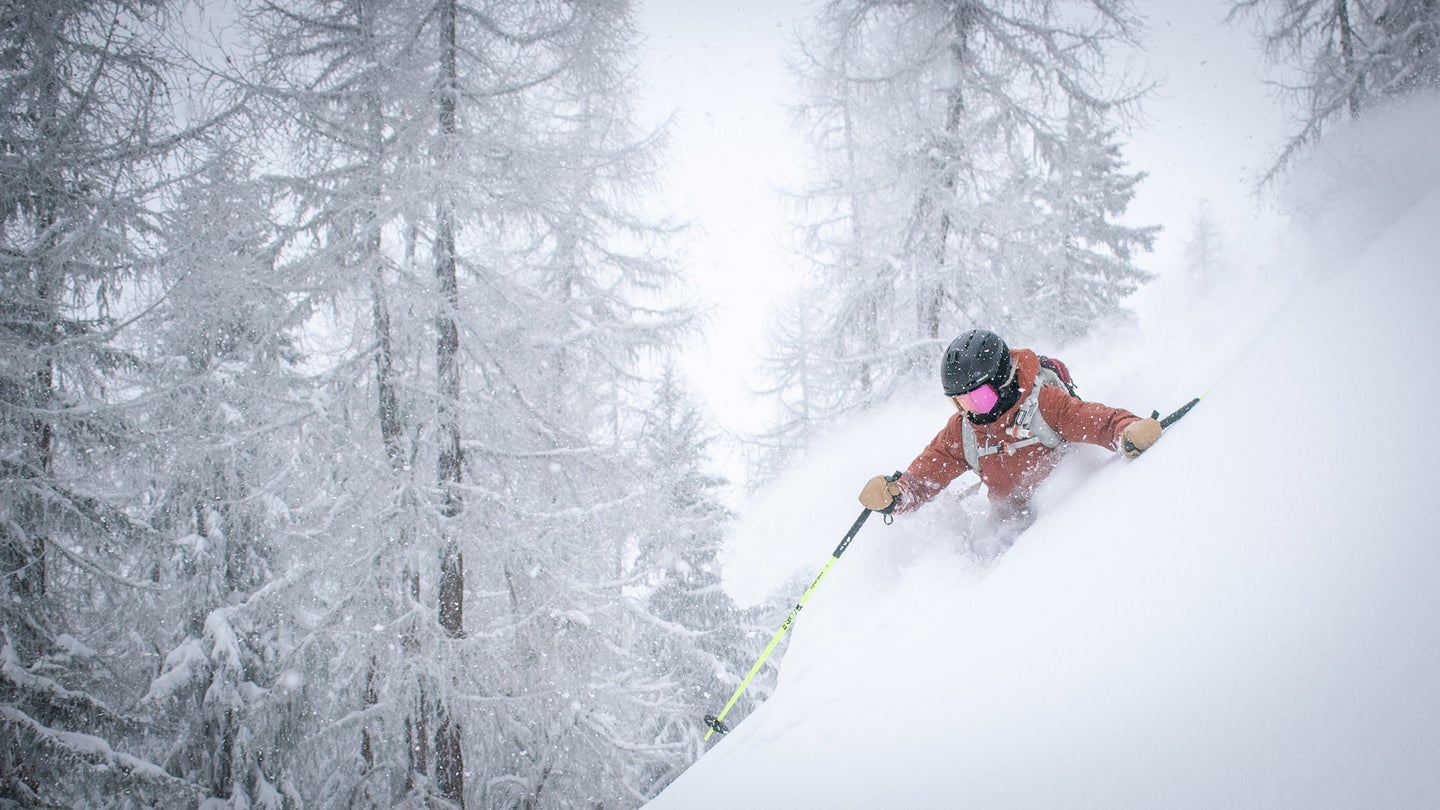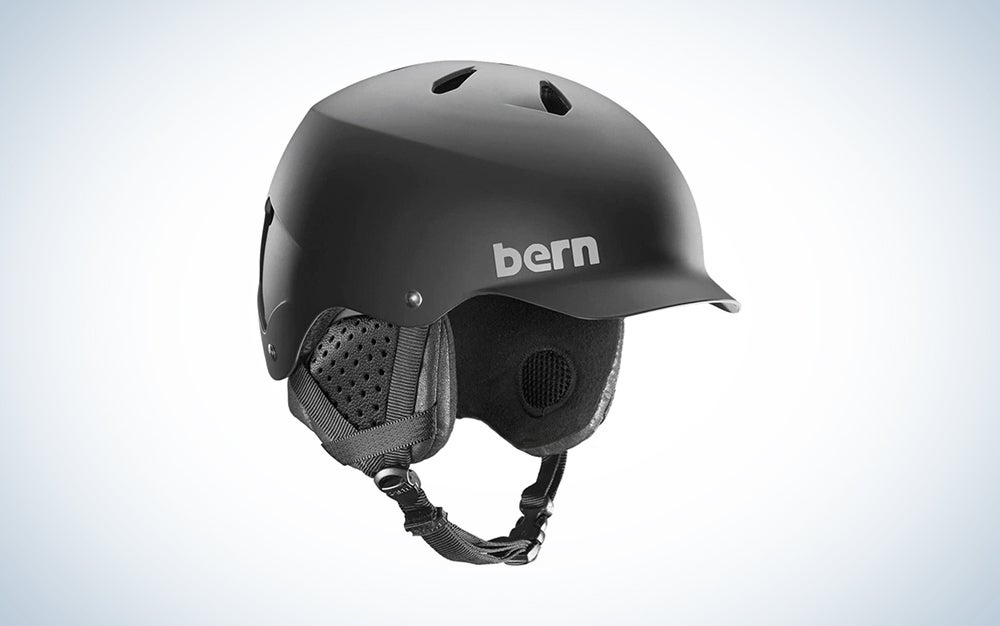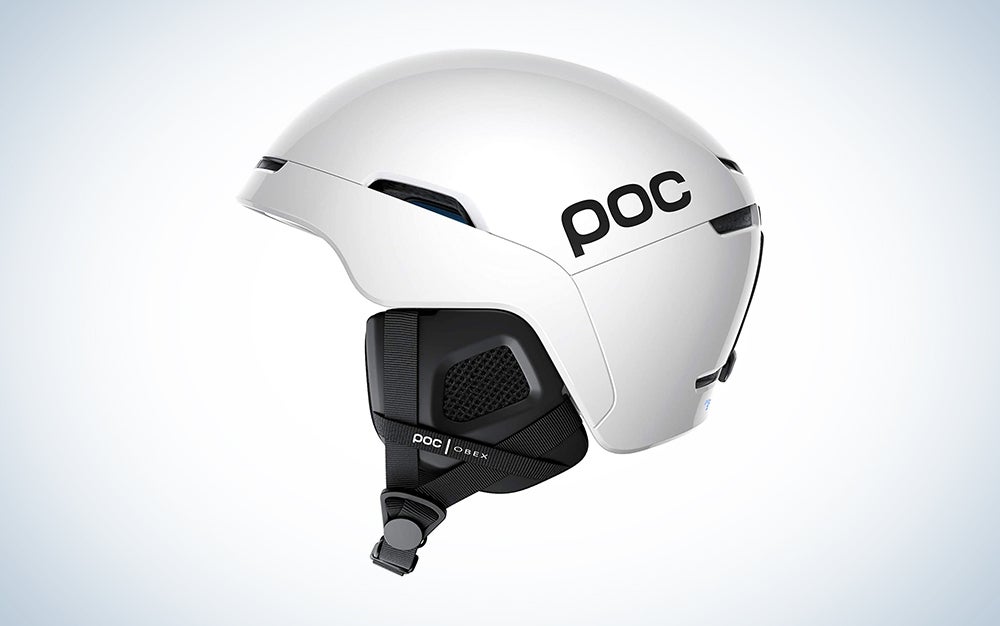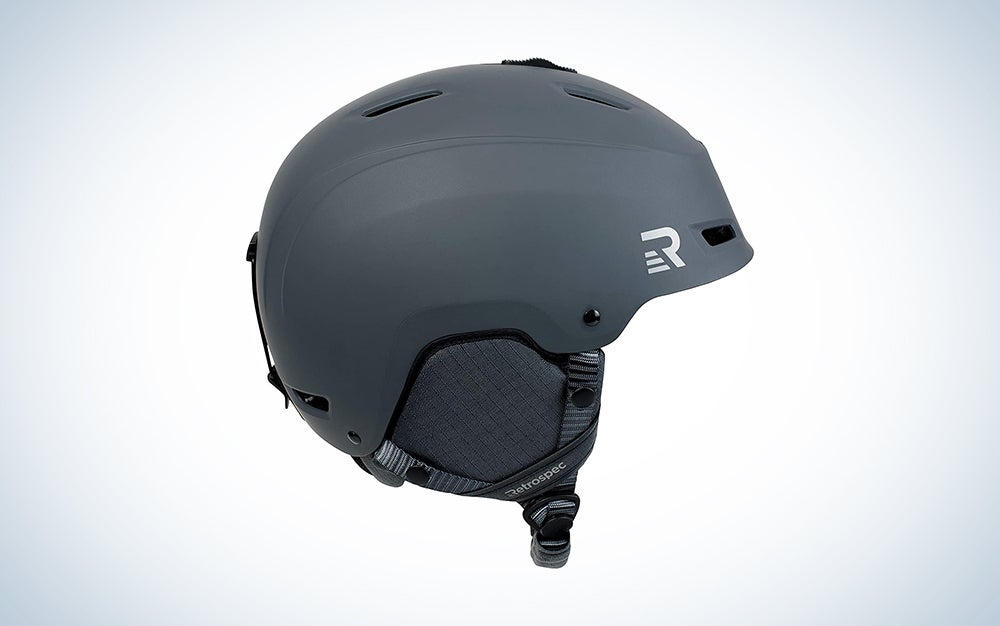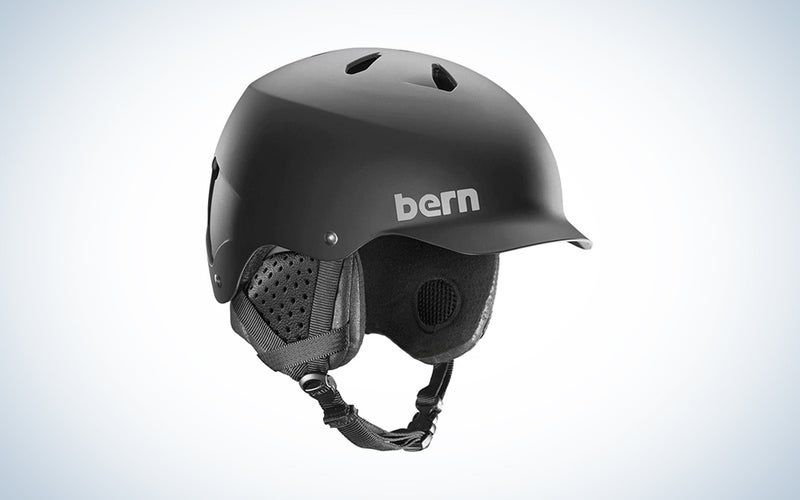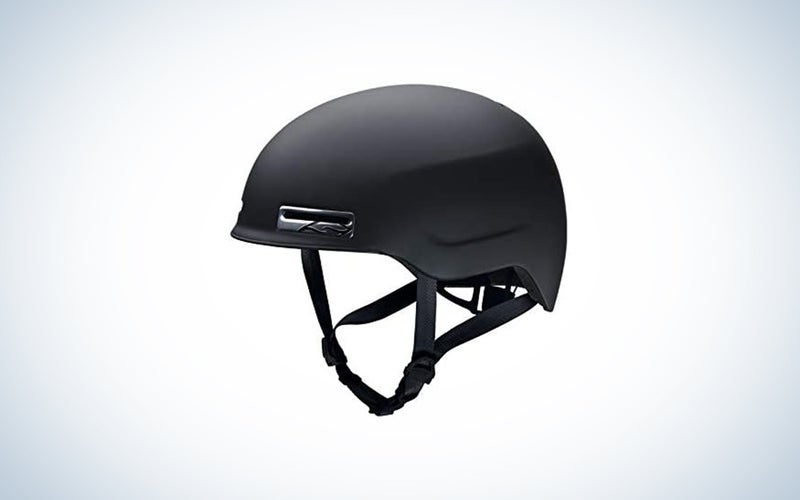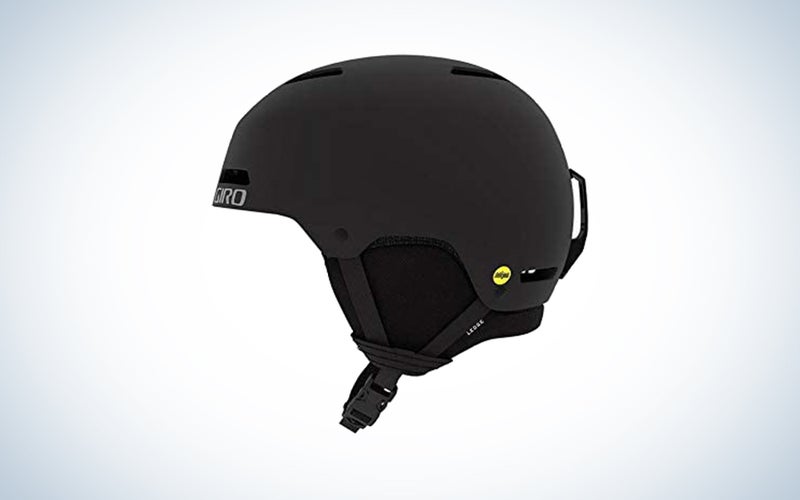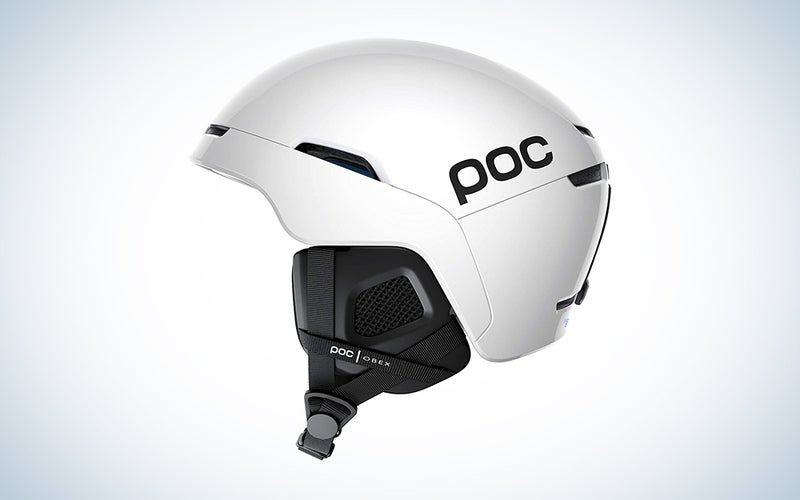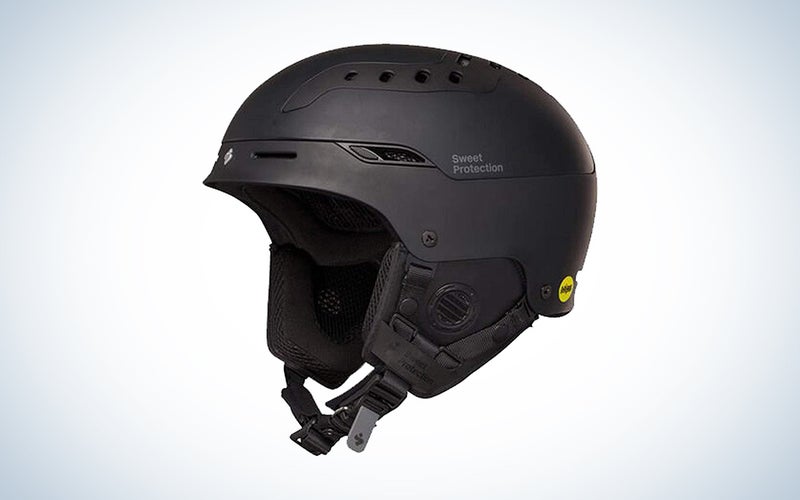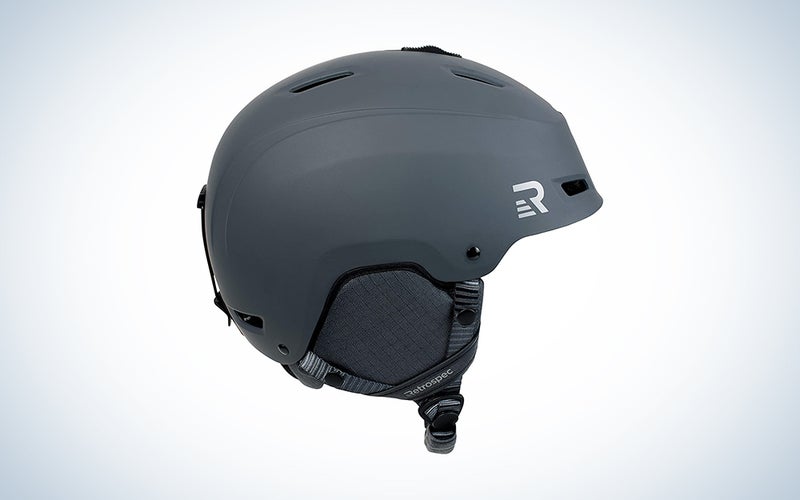We may earn revenue from the products available on this page and participate in affiliate programs. Learn more ›
Skiing is a fun and rewarding cold-weather activity that stimulates the body and mind, but it’s incredibly important to deck yourself out with proper protective equipment, including a ski helmet to protect your head and prevent dangerous injuries in the event of an accident. Whether you’re a seasoned ski bum or you’re just beginning to explore the joys of the slopes, falls and spills are an inevitable part of the deal, and you’ll want to ensure that you can walk away from your next wipeout unscathed and ready to ski another day.
Ski helmets are essential pieces of ski gear that come in all shapes and sizes, and all of their designs are generally made to offer ample protection while weighing as little as possible to avoid encumbering the wearer. Multi-impact protection system designs—commonly known as MIPS helmet designs—are a particularly common variety in this category, and are set apart from traditional designs by their ability to reduce the rotational force upon the brain during angled impacts. Below, we’ve picked some of our favorite ski helmets on the market and outlined a few key considerations to keep in mind when shopping for the best ski helmets for your next winter sports outing.
- Best overall: Bern Watts Snow Helmet
- Best lightweight: Smith Optics Maze Helmet
- Best versatile: Giro Ledge MIPS Snow Helmet
- Best protective: POC Obex Spin Helmet
- Best for ski mountaineering: Sweet Protection Switcher MIPS Helmet
- Best budget: Retrospec H4 Helmet
Features to consider when shopping for the best ski helmets
A great ski helmet will include lightweight construction, high durability, and seamless compatibility with ski goggles. Ski mountaineering and backcountry skiing also come with their own unique sets of challenges that can necessitate buying protective gear dedicated specifically to those activities.
First, a basic and versatile helmet for all skiers
Not all helmets are suited for every task, and there are several key features that set snow helmets apart from other styles. The best ski helmets overall offer comfort, protection from the elements, and safeguarding from the unique types of impacts one might encounter when taking a tumble in the snow. As stated above, MIPS protection is a crucial design feature that can significantly increase the effectiveness of your snow helmet and reduce rocking forces on your brain during an angled fall. The best ski helmets are also designed for compatibility with snow goggles and can be found with built-in visors to further protect users’ eyes from the sun and contribute to visibility in bright outdoor environments.
A cold weather liner is another feature to look for. By selecting a helmet with a removable liner or an adjustable fit, users who enjoy other high-speed outdoor sports in addition to skiing can also enjoy flexible, year-round protection from a single helmet.
Best overall: Bern Watts Snow Helmet
Bern
The Bern Watts Snow Helmet is a comfortable and versatile option for snow sports enthusiasts of all levels. It’s compatible with removable Bern thinshell weather liners and Bern wireless audio chips for music lovers. It has a MIPS-protection design that ensures wearers’ heads are safeguarded from rotational impacts and features a baseball-inspired visor bill for enhanced visibility and blockage from the sun and wind.
Backcountry skiing enthusiasts need a lightweight helmet
Backcountry skiers must consider the full weight of their packs and gear when planning a trip into the woods, so it’s important to choose a helmet and protective gear that provide an adequate level of protection without being too cumbersome.
When shopping for the best lightweight ski helmet, go for a model that’s constructed using an in-mold process, which allows the inner foam layer to become bonded to the outer shell as it’s being formed. This process renders a single-piece design that keeps weight down while offering ample protection. The most common foam used in this process is referred to as EPS, which stands for expanded polystyrene, and it’s the go-to material for lightweight construction.
Best lightweight: Smith Optics Maze Helmet
Amazon
This lightweight helmet from Smith Optics offers MIPS protection in a one-piece design that integrates the interior EPS layer with the outer shell. It’s available in several colors and features removable ear pads and a removable goggle strap lock, making it one of the best lightweight ski helmets on the market for its features set. It’s compatible with beanies and Outdoor Tech audio systems, as well.
Looking for a ski helmet that integrates well with ski goggles?
Ski goggles are an essential piece of protective gear for winter sports that preserve vision by guarding skiers’ eyes from the harsh rays of the sun and the drying wind. Users should never ski without goggles. When selecting a ski helmet, it’s important to take the time to verify whether a design is compatible with the goggles of your choice to ensure that you achieve a comfortable fit that won’t sacrifice your safety. Some models of ski helmets are specifically designed to be compatible with a wide range of ski goggles, making them a great choice for users who prefer flexibility or for folks who plan on sharing their helmet with others. Because goggles come in many shapes and sizes due to the differing faces and needs of wearers, choosing a versatile ski helmet that goes with many styles of goggles can lend some peace of mind and allow users to count on having a good fit no matter what goggles they end up wearing.
Best versatile: Giro Ledge MIPS Snow Helmet
Amazon
This Giro helmet is fine-tuned to fit seamlessly with a number of Giro goggles including the popular Axis and Blok lines, making it one of the best versatile ski helmets to go with goggles. It features a self-adjusting fit system to allow for flexible use on a variety of wearers as well as a complex ventilation system to prevent fogging of goggles and to allow hot air to escape from under the helmet. It’s also compatible with Outdoor Tech audio systems, making it a useful choice for users who want to listen to music or communicate on the slopes.
These are the most protective materials to look for in a ski helmet
Ski helmets and snowboarding helmets, much like other protective headgear, are constructed out of durable and robust materials designed to provide a high level of protection without adding too much weight to wearers’ heads and necks. The most common materials found in ski helmets include expanded polystyrene foam and acrylonitrile butadiene styrene—or EPS and ABS—respectively. A helmet that includes both of these materials will ensure that your head withstands impact and is guarded against the worst slips and falls.
Certain models of protective snow helmets take traditional foam and polystyrene constructions and add an additional layer of protection in the form of MIPS protection or other similar constructions. The shock-absorbing system strategically offsets the helmet from the head in the event of an impact to minimize rotational stress on the head and brain and deliver maximum safety to the user.
Best protective: POC Obex Spin Helmet
POC
The POC Obex is one of the best protective snow helmets on the market thanks to its unique design and incredible flexibility. It’s designed to be lightweight and customizable to users’ needs with the inclusion of a sliding vent control system and full compatibility with POC communication ear pads. An innovative silicone pad system inside the POC helmet absorbs shearing motions in a manner similar to MIPS constructions, which offers users robust protection when paired with the EPS liner and outer ABS shell.
For ski mountaineering, look to Sweet Protection
Ski mountaineering is a tough task that’s known to be physically and mentally challenging, but the payoff can be incredibly rewarding. For this unique and extreme activity, users should turn to high-quality and durable protective gear to keep themselves safe on steep terrain. The best ski helmet for ski mountaineering should provide ample protection for users’ heads while remaining lightweight and ergonomically sound given the demanding nature of the activity.
When shopping for a ski helmet, MIPS protection or some form of rotational protection is absolutely essential. Steep slopes offer more opportunities for higher speed, which comes with the dangers of higher and faster falls, so users need to take care to adequately shield their heads from every possible variety of impact. Helmet ventilation options should also be considered, with variable ventilation being a superior design feature in the case of helmets used for multiple snow sports.
Best for ski mountaineering: Sweet Protection Switcher MIPS Helmet
Amazon
This snow helmet from Sweet Protection provides a high level of safety, style, and flexibility, making it one of the best helmets for ski mountaineering you can buy. Its hybrid construction of in-mold interior and a hardshell exterior offer superior performance and it sports 26 vents for maximum airflow control. MIPS technology on the interior protects wearers from rotational forces upon impact, and a turn-dial fit adjustment system allows for quick and easy orientation. It’s also fully ready for use with the Sweet Protection audio system for users who want to stay connected.
The best ski helmets for a budget-minded shopper: What you can get for under $60
Ski helmets are essential pieces of protective gear built to perform to high standards and protect wearers from a variety of extreme impacts, and they have a substantial price tag to match. While it’s possible to find an effective ski helmet on a budget, it’s crucial to make your choice based on the strength and durability of the material used to avoid compromising your safety. Advanced technologies like MIPS construction and variable ventilation aren’t likely to be found on even the best cheap ski helmet, so budget-minded shoppers should refrain from using a less expensive helmet in more high-stakes snow sports activities. If, however, you’re shopping for a beginner or for a day on the bunny slopes, an affordable ski helmet may be all that you need.
Best budget: Retrospec H4 Helmet
Retrospec
The Retrospec H4 packs an easy-to-adjust dial and a fully customizable nine-vent breeze bar system into an affordable package that adds up to one of the best cheap ski helmets available. It’s constructed from ABS and EPS plastics and comes in four stylish colors to complement every skier’s personal taste. While it doesn’t offer the more advanced protection one might receive from a MIPS helmet, this is a great choice for beginners who are participating in very low-impact winter sports.
FAQs
Q: What should I look for in a ski helmet?
When shopping for a ski helmet, ventilation, fitment, and durability are key considerations to remember when making your selection. The best ski helmets are designed to be worn for long periods and fit securely and comfortably to the head, so it’s essential to pick a helmet designed specifically for snow sports to ensure the highest level of sustained safety.
Q: How do I measure my head for a ski helmet?
Measuring your head for a ski helmet is as simple as wrapping a tailor’s measuring tape around the circumference of the head at the widest point, which is usually around an inch above the eyebrows. The best ski helmets offer micro-adjustments and are designed to fit a range of head sizes, so you only need to ensure that your size falls within that range.
Q: When should I replace a ski helmet?
Passive wear and tear in helmets can differ greatly depending on the circumstances, but it’s crucial to always replace your helmet after it endures any crash or impact, as damage to the helmet will compromise its safety features and stability. As for passive replacement, most manufacturers recommend a three-to-five-year range, but that is entirely dependent upon how often the helmet gets used.
A final word on shopping for ski helmets
The best ski helmets feature durable and lightweight designs that excel at protecting your head from impacts in extreme snow sports. While infrequent skiers and children may benefit from using a cheap snow helmet, most snow sports enthusiasts will be better off with a durable design that includes MIPS technology or a comparable system for rotational protection while backcountry skiing or ski mountaineering. With the right protective gear and a flexible, stylish, ski helmet to top it all off, your next outing is guaranteed to be comfortable and worry-free.
